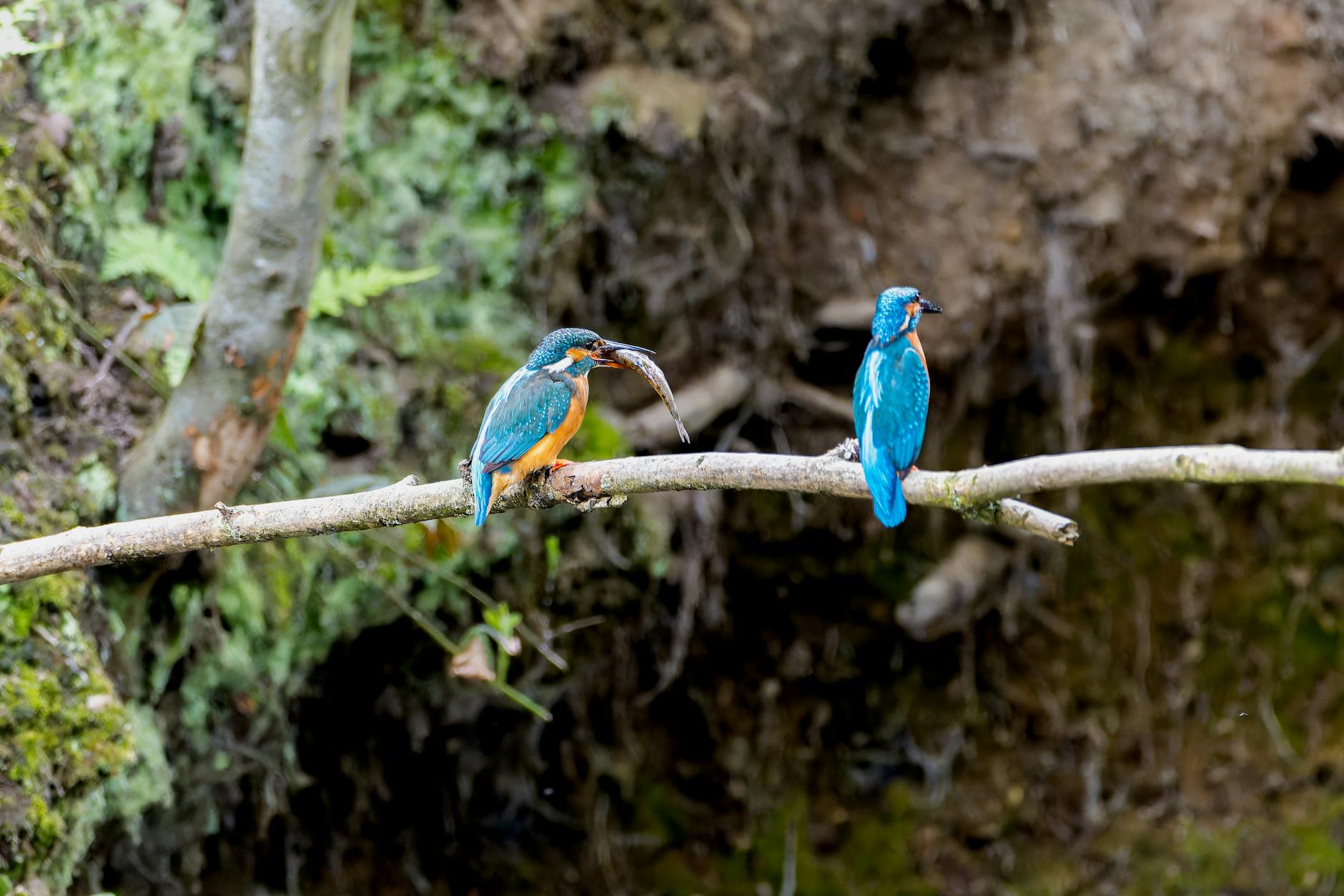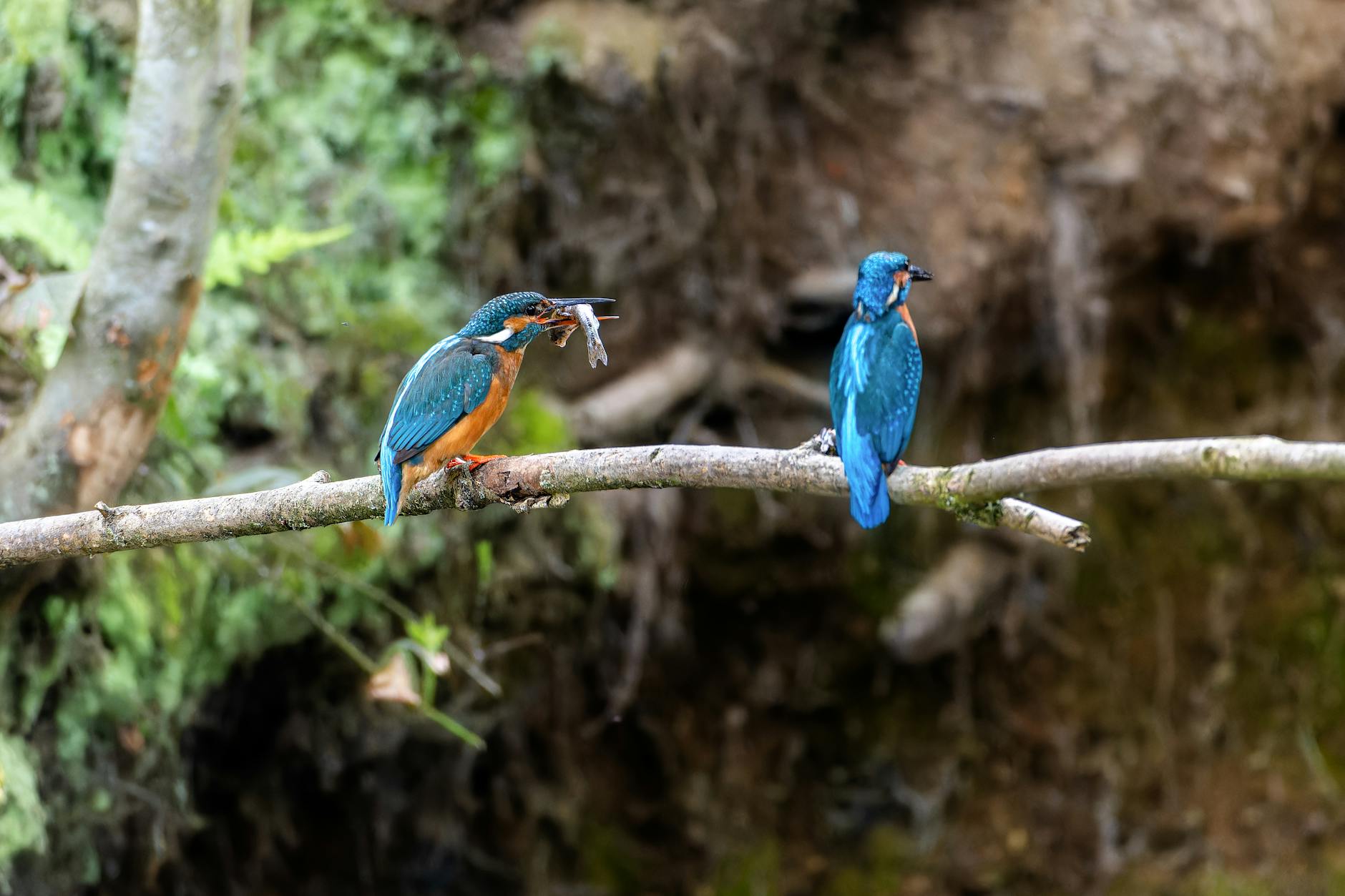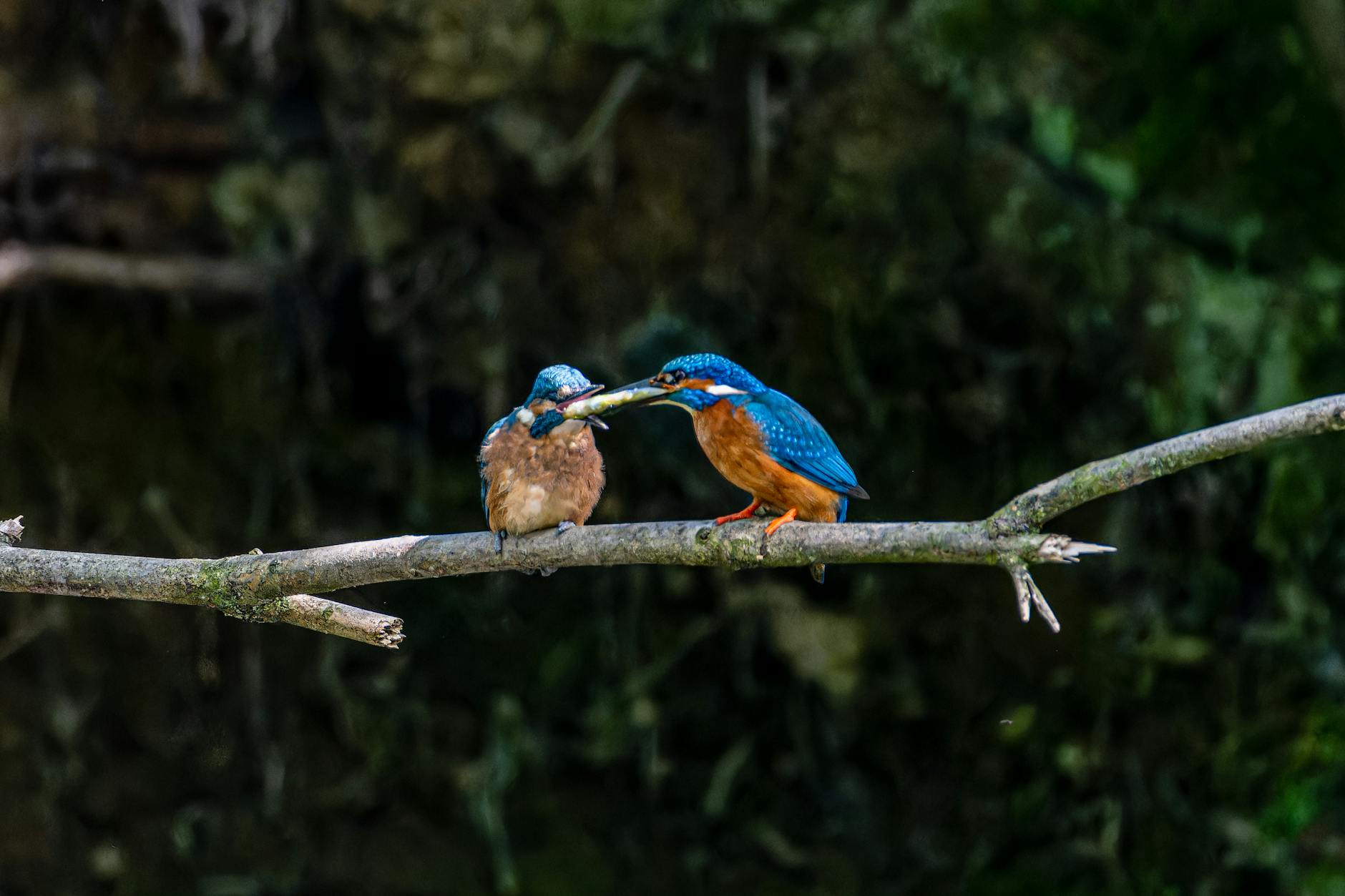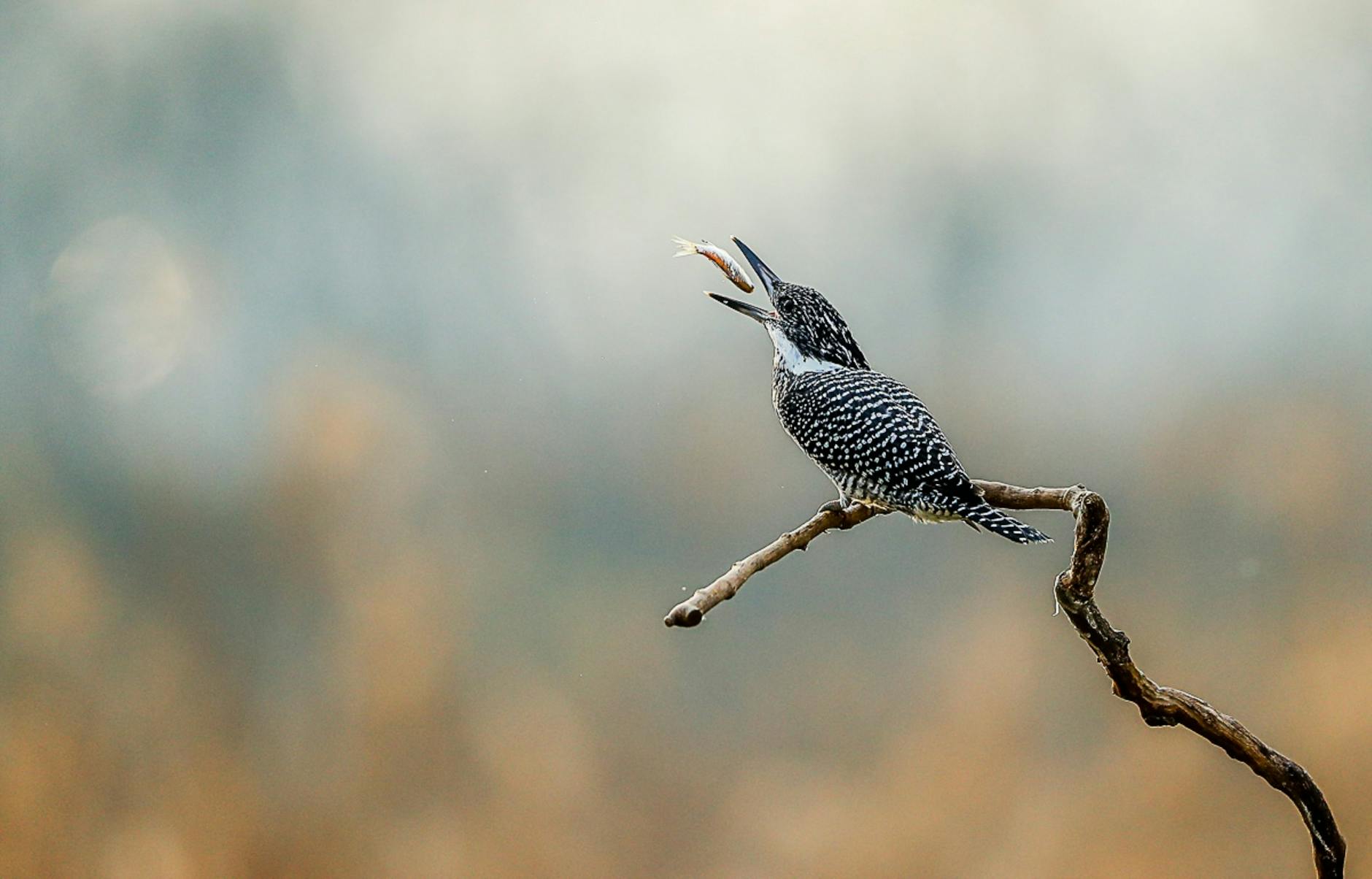Understanding Kingfisher Behaviour: What They Do and Why It Matters
Kingfishers are captivating birds, known for their striking colours and remarkable behaviours. But what exactly do they do, and why is it important to understand them?
These skilled hunters primarily thrive near water, where they dive for fish and other aquatic prey. Their unique hunting style involves a keen eye and precise timing, making them fascinating to observe. Understanding their behaviour not only reveals their role in the ecosystem but also highlights their importance in maintaining the balance of aquatic environments.
In this post, we’ll explore the intriguing habits of kingfishers, from their hunting techniques to their nesting preferences. By the end, you’ll gain a deeper appreciation for these beautiful birds and the vital roles they play in our world.
Physical Characteristics of Kingfishers
Kingfishers are remarkable not just for their behaviours but also for their distinctive physical traits that contribute to their hunting prowess. Understanding these characteristics enhances our appreciation for these fascinating birds and their adaptations to life near water.
Distinctive Plumage
The plumage of kingfishers is one of their most striking features. Their feathers display a dazzling array of colours, including vibrant blues, rich oranges, and striking greens. This vivid combination not only captivates observers but also serves practical purposes. The bright colours can help with camouflage among the vibrant aquatic environments they inhabit, and they can attract potential mates during the breeding season.
Many species possess unique patterns of feathers that vary by region. For instance, the Belted Kingfisher showcases a robust blue-grey colour with distinctive white markings around its throat and chest, making it easily identifiable. Learn more about kingfisher identification here.

Photo by Pixabay
Adapted Bill Structure
Kingfishers are famous for their long, sharp bills, which are perfectly adapted for foraging. Their bills come in various shapes and sizes, depending on their specific hunting techniques. For instance, species that fish primarily in shallow waters have wider, flatter bills, while those that catch small fish or insects in the air may have thinner, more pointed ones.
This structure aids in precision when diving for prey. A kingfisher’s bill allows it to pierce the water’s surface effectively, minimising disturbance and maximising catch rate. The bill’s length and strength also contribute to their ability to grip fish securely, preventing escape. To understand more about the fascinating structure of their bills, visit Animal Diversity Web.
Size and Weight
The size and weight of kingfishers vary significantly among species. They typically range from about 10 to 46 cm in length and weigh anywhere from 9 to 490 g. For instance, the tiny Common Kingfisher measures around 16–17 cm and weighs approximately 35 g, while the Giant Kingfisher can reach lengths of up to 45 cm and weigh about 350 g.
This size variation allows different species to exploit various niches within their habitats. Smaller species can dart in and out of dense vegetation, while larger ones are often more adept at fishing in open water. To explore the size range of various kingfishers, check out Britannica Kids.
The diverse physical characteristics of kingfishers showcase nature’s ingenuity. From their stunning plumage to their specialised bills and varying sizes, these traits work together to make kingfishers exceptional hunters in aquatic environments.
Hunting and Feeding Behaviour
Kingfishers are exceptional hunters, employing specialised techniques to catch their prey. Their feeding behaviour is finely tuned to their aquatic environment, allowing them to thrive in various habitats. Understanding their hunting methods and dietary preferences provides valuable insights into these fascinating birds.
Diving Technique
When hunting, kingfishers use a unique diving technique. They often perch high above water, scanning the depths for movement. Once they spot a fish, they dive head-first, using their sharp beaks to spear their prey. This technique requires incredible precision, as they must compensate for the distortion caused by the water’s surface.
As they plunge, their bodies streamline for minimal resistance. Some species use a method called “splash diving,” where they land on the water’s surface to catch fish that are close to the surface. Others dive deeper for larger prey. Their keen eyesight allows them to judge distances accurately, making each dive an impressive display of skill. For a deeper look into their hunting techniques, check out this article on How do kingfishers hunt?.

Photo by Siegfried Poepperl
Prey Selection
Kingfishers primarily target fish but also consume various aquatic animals. Their diet mainly consists of:
- Fish: Small species such as sticklebacks, trout, and minnows.
- Invertebrates: They occasionally eat insects, worms, and crustaceans.
- Amphibians: Frogs and tadpoles can also be part of their meals.
The Common Kingfisher, for example, can consume about 13 to 21 fish daily, which makes up to 60% of its body weight. This high protein intake is crucial for their energy-intensive lifestyle. For a comprehensive overview of their dietary preferences, visit What Do Kingfishers Eat?.
Feeding Habits
Kingfishers typically eat frequently throughout the day, as they require a substantial amount of food for energy. They often hunt in short bursts, selecting their territory carefully to ensure a steady food supply.
Their foraging behaviour varies by species and habitat. Some prefer to sit and wait for prey to pass, while others actively chase after fish. Their hunting is seasonal; during breeding seasons, they may need to hunt even more to feed their young.
In addition to fish, kingfishers sometimes share their habitats with other birds, adjusting their feeding strategies to avoid competition. To learn more about their feeding habits, check out this analysis on Feeding habits of kingfishers.
Reproductive Behaviour
Reproductive behaviour in kingfishers is both fascinating and complex. From nesting to parental care and courtship displays, these activities are crucial for the continuation of their species. Let’s take a closer look at these behaviours.
Nesting Locations
Kingfishers typically build their nests in soft, sandy banks near water sources. They dig burrows that can reach up to 15 feet deep, creating a secure environment for their eggs and young. These burrows often have a nesting chamber at the end.
Nesting sites may vary based on species, but they primarily prefer areas with plenty of fish and minimal disturbance. The burrows protect chicks from predators and harsh weather.
- Common Locations:
- Riverbanks
- Lakeshores
- Sand and gravel pits
Each nesting site is carefully chosen to ensure that the young have access to plentiful food, which is vital for their growth. For more insight into kingfisher nesting locations, check out this article on Belted Kingfishers Nest in Burrows.

Photo by Siegfried Poepperl
Parental Care
Both male and female kingfishers participate actively in raising their young. Initially, the male brings food to the female while she incubates the eggs. Once the chicks hatch, both parents share the responsibility of feeding them.
Feeding behaviour includes:
- Initial Stages: Parents provide partially digested fish to the chicks.
- Later Stages: As the chicks grow, they are fed whole fish.
This division of labour ensures that the chicks receive sufficient nourishment to thrive. Once the young are ready to leave the nest, they typically stay with their parents for a few weeks, learning to hunt. Discover more about their caregiving habits in this Belted Kingfisher Life History.
Courtship Displays
Courtship displays are crucial for attracting mates and establishing pair bonds. During the breeding season, male kingfishers perform various rituals to showcase their vibrant plumage and fitness.
Some notable courtship behaviours include:
- Fishing for the Female: Males often present caught fish to potential mates as part of the display.
- Dramatic Movements: They may engage in acrobatic flights, fluttering their wings to display their colours.
These displays occur on exposed perches where the birds can highlight their striking features. Interestingly, both partners may select the nest site during these rituals. For further details on their courtship, visit this article on Courting Common Kingfishers.
Understanding these reproductive behaviours helps us appreciate the complexities of kingfisher life and their roles in their ecosystems.
Social Behaviour and Communication
Kingfishers possess intriguing social behaviours and communication methods that play a fundamental role in their interactions. Understanding these aspects sheds light on how they maintain territories, communicate with each other, and coexist with other species in their environment.
Territoriality
Kingfishers are known for their strong territorial instincts. They establish and defend territories year-round to ensure access to resources like food and nesting sites. Typically, a pair of kingfishers will claim an area of water, marking the boundaries with calls and displays.
Defending their territory may involve vocalisations and physical displays. If another kingfisher enters their space, they may chase it away. This behaviour ensures that they secure adequate hunting grounds and reduces competition. For a detailed overview of kingfisher territory dynamics, visit Animal Diversity.

Photo by Siegfried Poepperl
Vocalisations
Vocalisations are crucial for kingfishers. They use a variety of calls to communicate with each other, announce their territory, and signal alarm. The sounds range from shrieks to softer calls, depending on the context. For example, during courtship, male kingfishers often produce distinctive calls to attract females.
These vocalisations also serve to warn off intruders or alert partners to danger. Notably, different species of kingfishers have unique vocal patterns that enhance their recognition of one another. To explore more about their fascinating sounds, check out this resource on Belted Kingfisher Sounds and Vocal Behaviour.
Interactions with Other Species
Kingfishers do not exist in isolation. Their interactions with other birds and animals significantly impact their behaviour. They often coexist with various species, such as herons and egrets, in shared habitats. While competing for food, kingfishers may also benefit from the presence of other birds that disturb fish, making them easier to catch. This relationship showcases a form of commensal association, where both species gain from the situation.
However, kingfishers can also face threats from larger predators like owls and raptors. In such cases, they must remain vigilant to protect themselves and their young. Understanding these interactions emphasises the importance of kingfishers within their ecosystems. To learn more about these associations, visit the article on Commensal Association of Kingfishers.
By studying kingfisher behaviour, we uncover layers of their social dynamics. Their territoriality, vocal communication, and interactions with other species highlight their adaptability and resilience in diverse environments.
Survival Strategies
Kingfishers have developed clever survival strategies that help them thrive in their environments. Their remarkable adaptations include effective camouflage and agile escape responses, both essential for evading predators and ensuring their safety.
Camouflage Techniques
Kingfishers possess striking colours, but these vibrant hues also serve a practical purpose. Their plumage, which often features deep blues, greens, and warm oranges, allows them to blend in with their surroundings, particularly near water where they often hunt. This natural camouflage is essential for both hunting and avoiding predators.
When perched among lush foliage or near rippling water, their colours mimic the shimmering reflections of light. This blending helps them stay concealed from larger birds of prey and terrestrial animals. As they wait to catch fish, the kingfisher’s ability to remain unnoticed enhances their success rate in hunting. You can explore more about kingfisher camouflage here.

Photo by Adam Chen
Escape Responses
When threatened, kingfishers exhibit remarkable flight patterns and evasive actions. Their primary mode of escape is sudden, rapid flight. They are known for their incredible speed and agility, which allow them to dodge potential threats effectively.
Their escape strategy typically involves a few key behaviours:
- Quick Take-off: Upon sensing danger, a kingfisher will swiftly take flight, often in a sharp, upward angle to gain altitude quickly.
- Darting Movements: They often zigzag in flight when pursued, making it difficult for predators to predict their path.
- Diving and Hiding: If a kingfisher is close to water, they may dive beneath the surface, using their swimming ability to evade capture.
This combination of flight patterns makes kingfishers notably difficult to catch. Their keen eyesight helps them stay alert to dangers, ensuring they can respond swiftly. For more details on their flight patterns, you can visit this article on kingfisher escape strategies.
These survival strategies demonstrate the kingfisher’s adaptability in avoiding predators while successfully hunting for food. Understanding these behaviours highlights their resilience in a changing environment.
Impact of Environmental Changes
Environmental changes have a direct impact on kingfisher behaviour. Factors like habitat loss and climate change pose significant challenges to these birds, altering their habits and survival strategies. Understanding these pressures sheds light on the current status of kingfishers and their future.
Habitat Preferences
Kingfishers thrive in specific habitats that provide the necessary elements for their survival. They prefer riparian zones, freshwater lakes, and wetlands. These areas are rich in food sources, primarily fish, which are essential for their diet.
When these habitats face degradation due to human activity, kingfishers suffer. Habitat alteration often results from:
- Urban development: Construction of roads and buildings disrupts natural habitats.
- Agriculture: Pesticides and fertilisers can contaminate water bodies.
- Pollution: Waste dumping affects water quality, impacting fish populations.
Such changes can lead to increased competition for resources, forcing kingfishers to adapt their hunting strategies or relocate to less favourable conditions. The decline in fish availability can severely impact their ability to thrive. For a detailed analysis on habitat preferences, visit Long-term anthropogenic stressors cause declines in kingfisher assemblages.

Photo by Maria Kray
Adaptation to Change
Kingfishers have shown remarkable adaptability in response to environmental changes. However, the speed and scale of change can overwhelm their natural instincts.
As habitats degrade, kingfishers may adjust their behaviour in several ways:
- Hunting patterns: They might change their hunting times or methods, opting for different prey.
- Migration: Some species may migrate to find better conditions or food sources.
- Nesting behaviour: Kingfishers may alter nesting sites, seeking safer locations away from deteriorating environments.
Climate change adds another layer of complexity, affecting weather patterns and fish availability. Increased flooding, droughts, and temperature changes can disrupt breeding cycles and food sources. For more on climate impacts, explore How Climate Change Impacts Birds.
By studying how these beautiful birds adapt, we can better understand the importance of conserving their habitats. Protecting kingfishers means preserving the ecosystems they inhabit, ensuring their survival for future generations.
Conclusion
Understanding kingfisher behaviour is essential for appreciating their role in ecosystems. These birds are skilled hunters, showcasing unique techniques that highlight their adaptability.
By observing their nesting patterns, feeding habits, and social interactions, we gain insights into their lives and how they respond to environmental changes.
As their habitats face increasing threats, awareness of these behaviours becomes crucial. Join the effort to protect these beautiful creatures and the environments they inhabit. How can we all contribute to preserving kingfisher habitats?










